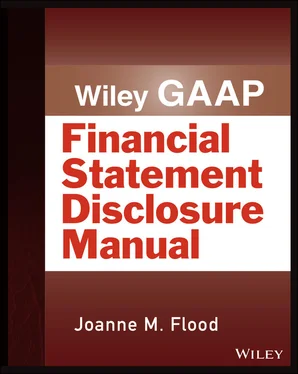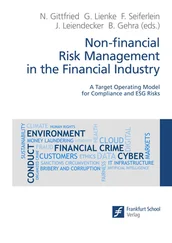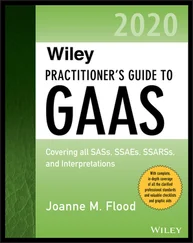Information
How are you collecting the financial data necessary to prepare the statement?
What processes are in place to ensure this information is complete and accurate, especially to the extent new or nonrecurring transactions have occurred?
Are there manual processes that are ad hoc that could be standardized or automated?
People
Do those individuals preparing the statement of cash flows understand the principles in ASC 230?
Are there ways you can provide them with better training to perform their job?
Do those individuals reviewing the statement of cash flows have enough expertise to identify and prevent misstatements in their review process?
Timing
Are there ways to prepare and review the statement of cash flows earlier in the financial statement closing process?(Source: https://www.sec.gov/news/speech/2014-spch120814tkc)
PRESENTATION AND DISCLOSURE REQUIREMENTS
Objective
The primary purpose of the statement of cash flows is to provide information about the entity's operations, investing transactions, and financing activities during the period. (ASC 230‐10‐45‐1) The statement includes inflows and outflows of cash and cash equivalents. The statement must also present a reconciliation of net income and net cash from operating activities. (ASC 230‐10‐45‐2) Operating activities are particularly useful to investors because they show the entity's ability to act as a going concern.
Cash flow per share may not be displayed in the financial statements of a reporting entity. (ASC 230‐10‐45‐3)
Cash and Cash Equivalents
Entities must explain the changes in the total of cash and cash equivalents and amounts described as restricted cash or restricted cash equivalents. Entities must combine restricted cash with unrestricted cash and cash equivalents in the statement of cash flows. If those amounts are presented in more than one line item in the statement of financial position, the entity must disclose:
The line items
Amounts of cash described as restricted cash or restricted cash equivalents
The disaggregated amounts must equal the total shown in the statement of cash flows. This information may be presented on the face of the statement or in the notes in narrative or tabular format. (ASC 230‐10‐45‐4 and 50‐8)
Entities commonly invest excess cash on hand in short‐term, highly liquid investments, and those amounts are substantively the cash the entity owns. Therefore, it makes sense for the statement of cash flows to focus on the aggregate amount of those accounts. Cash purchases and sales of cash equivalents are part of the entity's cash management activities, and those transactions need not be reported in the statement of cash flows. Entities should not present transfers between cash and cash equivalents and restricted cash and restricted cash equivalents. (ASC 230‐10‐45‐5)
Cash equivalents generally include any short‐term, highly liquid investments used as a temporary investment of idle cash. The entity must, however, have a policy as to which investments that meet the definition are treated as cash equivalents and that policy should be disclosed in the notes. (ASC 230‐10‐45‐6 and 50‐1)
Restrictions on Cash and Cash Equivalents
While the ASC does not provide a formal definition of unrestricted cash, it does require entities to disclose information about the nature of the restriction on its cash, cash equivalents, and amounts described as restricted cash or restricted cash equivalents. (ASC 230‐10‐50‐7) Companies generally present restricted cash separately from cash and cash equivalents. However, the line item may not be titled restricted cash.
The emphasis in the statement of cash flows is on gross cash receipts and payments, and, with limited exceptions, most investing and financing activities must be presented gross. For instance, reporting the net change in bonds payable would obscure the financing activities of the entity by not disclosing separately cash inflows from issuing bonds and cash outflows from retiring bonds.
In a few circumstances, netting of cash flows is allowed. The items must have these characteristics:
Quick turnovers,
Large amounts, and
Short maturities (maturities of three months or less).(ASC 230‐10‐45‐8)
Net reporting for the following assets and liabilities is allowed provided the original maturity is three months or less:
1 Investments (other than cash equivalents),
2 Loans receivable, and
3 Debts.
For this purpose, due on demand amounts are considered to have maturities three months or less. Also, credit card receivables of financial services operations are considered loans with maturities of three months or less when at the cardholders option:
The amount charged may be paid in full when first billed,
The payment is usually due within one month without interest, and
The charges are not from the entity's sale of goods or services.(ASC 230‐10‐45‐9)
Classification of Cash Receipts and DisbursementsThe statement of cash flows requires classification of cash receipts and cash disbursements into three categories:
1 Investing activities
2 Financing activities
3 Operating activities(ASC 230‐10‐45‐10)
These classifications allow users to evaluate significant relationships and among the activities and to understand the cash flow effects of major activities and to identify trends. (ASC 230‐10‐10‐2) These classifications mirror the order of the statement of cash flows. That is, the operating activities section appears first with the investing and financing activities following.
Operating ActivitiesOperating activities include all transactions and other events that are not defined as investing or financing activities. Operating activities generally involve producing and delivering goods and providing services. (ASC 230‐10‐20)
Investing ActivitiesInvesting activities include making and collecting loans and acquiring and disposing of debt or equity instruments and property, plant, and equipment and other productive assets, that is, assets held for or used in the production of goods or services by the entity (other than materials that are part of the entity's inventory). Investing activities exclude acquiring and disposing of certain loans or other debt or equity instruments that are acquired specifically for resale. (ASC 230‐10‐20)
Financing Activities Financing activities include obtaining resources from owners and providing them with a return on, and a return of, their investment; receiving restricted resources that by donor stipulation must be used for long‐term purposes; borrowing money and repaying amounts borrowed, or otherwise settling the obligation; and obtaining and paying for other resources obtained from creditors on long‐term credit. (ASC 230‐10‐20)
Following is a list of the classifications of cash inflows and outflows within the statement of cash flows.
Operating Activities—Cash Inflows
Receipts from sale of goods or services.
Returns on loans, other debt instruments of other entities, and equity securities (interest and dividends).
All other cash receipts not from inventory or financing activities.(ASC 230‐10‐45‐16)
Receipts from sales of other securities and other assets if acquired for resale and carried at fair value in a trading account.(ASC 230‐10‐45‐20)
Receipts from acquisitions and sales of loans acquired specifically for resale and carried at fair value at the lower of amortized cost basis or fair value. (ASC 230‐10‐45‐21)
Читать дальше












